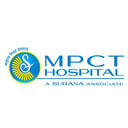Varicose Veins - How Does Sclerotherapy Treat It?
Varicose veins are enlarged and gnarly veins and they commonly appear in the feet and legs. They occur when veins get filled with blood and they are often red or bluish purple in color.
The main cause of varicose veins is the when the vein dysfunctions. Veins have valves in them that are supposed to keep the blood flowing forward, but if they fail to do so, blood in the vein starts to collect rather than continue towards the heart. Since the legs are furthest from the heart, varicose veins mostly affect the legs. Gravity, too, is a contributing factor as it makes it hard for the blood to flow up the vein.
Out of all the treatments available for varicose veins, sclerotherapy is the most effective.
What is sclerotherapy:
Sclerotherapy is a form of injection therapy that is designed to improve the way the varicose veins appear on your legs.
The Procedure: During the procedure, a solution called sclerosant is injected in the veins that scars and destroys the vein's internal lining which causes the blood to clot. After the solution is injected, pressure over the veins is applied to prevent the return of the blood as you stand up. Compression stockings are worn for maintaining the pressure.
After the Procedure: There is no prolonged recovery time for sclerotherapy. You can move around immediately after the procedure, but do not strain yourself too much. However, bed rest is not recommended as it might stress the vein. You probably have to keep wearing the compression stockings for a few days more.
Reasons for Choosing Sclerotherapy:
Sclerotherapy is best for treating the following problems-
- Small veins and spider veins that do not cause severe damages
- Smaller varicose veins that might return even after vein stripping surgery (the surgical removal of the superficial saphenous vein with minimal incisions to treat varicose veins).
- Larger varicose veins
- Follow up to any other surgery to treat varicose veins
Risks involved:
Sclerotherapy, like any other treatment, has certain risks. The risks include-
- Skin discoloration
- The varicose veins can still return after the treatment
- Bruising, itching, blistering and pain in the treated area
- Mild or severe allergic reaction to the solution (sclerosant) used
- Blood clots in the deep vein system.



+1.svg)
